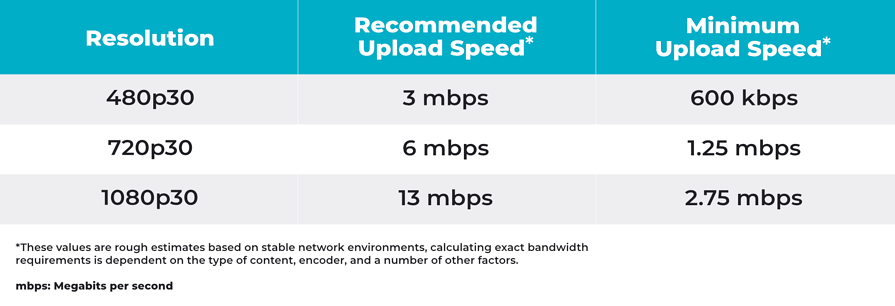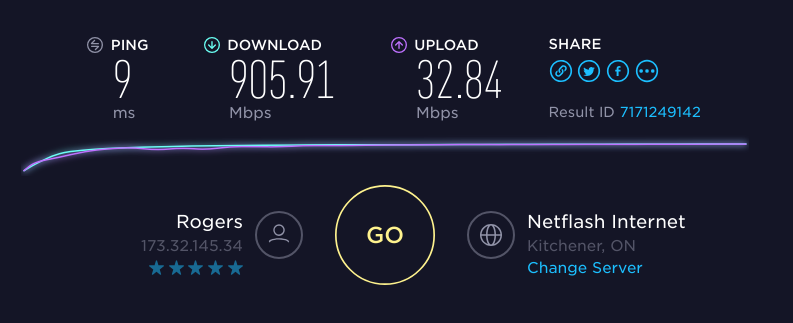Comparing Internet Service Providers: Who Supplies the Best Megabits Per Second?
Comparing Internet Service Providers: Who Supplies the Best Megabits Per Second?
Blog Article
How Megabits Per Second Impact Your Online Activities
The concept of megabits per second (Mbps) plays an essential function in shaping our on the internet experiences. Greater Mbps can boost performance and lower disturbances, while poor speeds might promote stress and ineffectiveness.
Recognizing Megabits Per Second
When thinking about net rate, it's vital to comprehend the idea of megabits per second (Mbps), which offers as a standard measurement for information transfer prices. This statistics measures just how much information can be transferred over an internet connection in one second, providing a clear understanding of performance capabilities - Megabits Per Second. For context, one megabit is equivalent to one million little bits, and Mbps is typically made use of to reveal transmission capacity for numerous on-line activities
A greater Mbps suggests a faster internet link, making it possible for customers to do tasks such as downloading and install files, browsing web sites, and engaging in on-line pc gaming a lot more successfully. For circumstances, common surfing calls for around 1-5 Mbps, while streaming high-definition video clip might require 5-25 Mbps. Comprehending these requirements is crucial for determining the suitable web rate needed for certain activities.
In addition, the variety of devices attached to a network can impact general efficiency. Numerous individuals streaming, gaming, or downloading all at once can stress offered transmission capacity, leading to slower rates - Megabits Per Second. Examining individual online habits and needs is vital in choosing a web strategy that straightens with one's needs, ensuring a smooth electronic experience
Streaming and Buffering Issues
Streaming high-def material has actually come to be a staple of modern-day on the internet home entertainment, yet it is usually come with by annoying buffering concerns. These interruptions can considerably interfere with the seeing experience, resulting in dissatisfaction and prospective loss of target market involvement. Buffering takes place when the information transmitted from the streaming solution is not obtained quickly sufficient to keep a smooth playback, commonly as a result of insufficient net speed determined in megabits per second (Mbps)

Additionally, real-time streaming can be impacted by network blockage, which takes place when several tools share the same data transfer. Consequently, enhancing connection speed and guaranteeing appropriate Mbps is crucial for a smooth streaming experience. As streaming solutions continue to develop, recognizing the influence of Mbps on buffering issues remains critical for customers looking for nonstop enjoyment.
Online Gaming Efficiency
The influence of internet rate on on-line tasks expands beyond streaming, dramatically influencing online gaming performance. In affordable pc gaming, reduced latency and high bandwidth are critical for a smooth experience. A quick link lessens lag, enabling players to react swiftly to in-game occasions, which can be the distinction between victory and loss.
Data transfer, measured in megabits per second (Mbps), plays an essential duty in sustaining several devices and video gaming systems at the same time. Not enough data transfer can bring about went down connections or lowered video game high quality, adversely impacting gameplay. For example, on-line multiplayer video games need considerable data transfer, especially throughout peak gaming hours when various players are online.
Fast-paced first-person shooters demand greater rates to preserve responsiveness, while turn-based method video games may function fairly well on reduced rates. As online video gaming proceeds to develop, with boosting visual integrity and more intricate multiplayer atmospheres, the need for higher Mbps will just escalate.
Video Clip Conferencing Quality
In today's electronic landscape, video conferencing high quality is greatly influenced by net speed, particularly in regards to bandwidth and latency. Premium video clip calls call for adequate transmission capacity to send audio and video information flawlessly. Commonly, a minimum of 1.5 Mbps upload and download rates is advised for common meaning video clip, while high-def video clip conferencing typically demands at least 3 Mbps.
Latency, or the click now hold-up between sending and receiving data, likewise plays a critical function in the individual experience. Reduced latency makes certain that discussions circulation normally without uncomfortable go now stops or disturbances. Ideally, latency must be listed below 150 milliseconds for effective interaction. Higher latency can result in resemble, lag, and disjointed communications, which can hinder collaboration and engagement during meetings.
Additionally, several participants in a video seminar can strain available data transfer, necessitating even higher rates. Network congestion, frequently triggered by synchronised tasks like streaming or downloading, can further degrade video clip high quality. Therefore, for organizations counting on video conferencing for remote collaboration, understanding the partnership in between megabits per general and second communication top quality is crucial for keeping efficiency and improving online interactions.
Selecting the Right Internet Plan
Picking an ideal net strategy is important for making sure optimum performance in various on-line tasks, particularly in setups that demand high transmission capacity, such as video conferencing and online gaming. Megabits Per Second. When considering an internet plan, it is essential to assess both the rate and data allocation to match your details use demands
For families with several individuals involving in synchronised tasks, a plan using higher megabits per second (Mbps) is advised. Commonly, a minimum of 25 Mbps appropriates for common streaming and surfing, while plans exceeding 100 Mbps are more suitable for more extensive jobs. Furthermore, take into consideration the nature of your online activities; video conferencing requires at the very least 1.5 Mbps upload rate, while on-line video gaming might need a lower latency but regular connection.
Limitless information strategies can protect against throttling and disturbances, official statement especially if hefty usage is expected. By thoughtfully choosing an internet plan tailored to your demands, you can enhance your online experience, making sure smooth, continuous accessibility to your preferred activities.
Conclusion
Finally, the relevance of megabits per second (Mbps) in forming on the internet tasks can not be overstated. Higher Mbps promotes seamless streaming, lowers buffering, boosts video gaming experiences, and ensures premium video conferencing. Conversely, insufficient bandwidth can bring about aggravating interruptions and lessened efficiency throughout numerous tasks. A detailed understanding of specific or household Mbps requirements is crucial for selecting a suitable internet plan that properly supports diverse online tasks and user needs.

Usually, a minimum of 25 Mbps is ideal for basic streaming and surfing, while strategies surpassing 100 Mbps are better for more extensive jobs. Furthermore, think about the nature of your online tasks; video conferencing calls for at the very least 1.5 Mbps publish rate, while on-line gaming may require a lower latency but constant connection.
Report this page